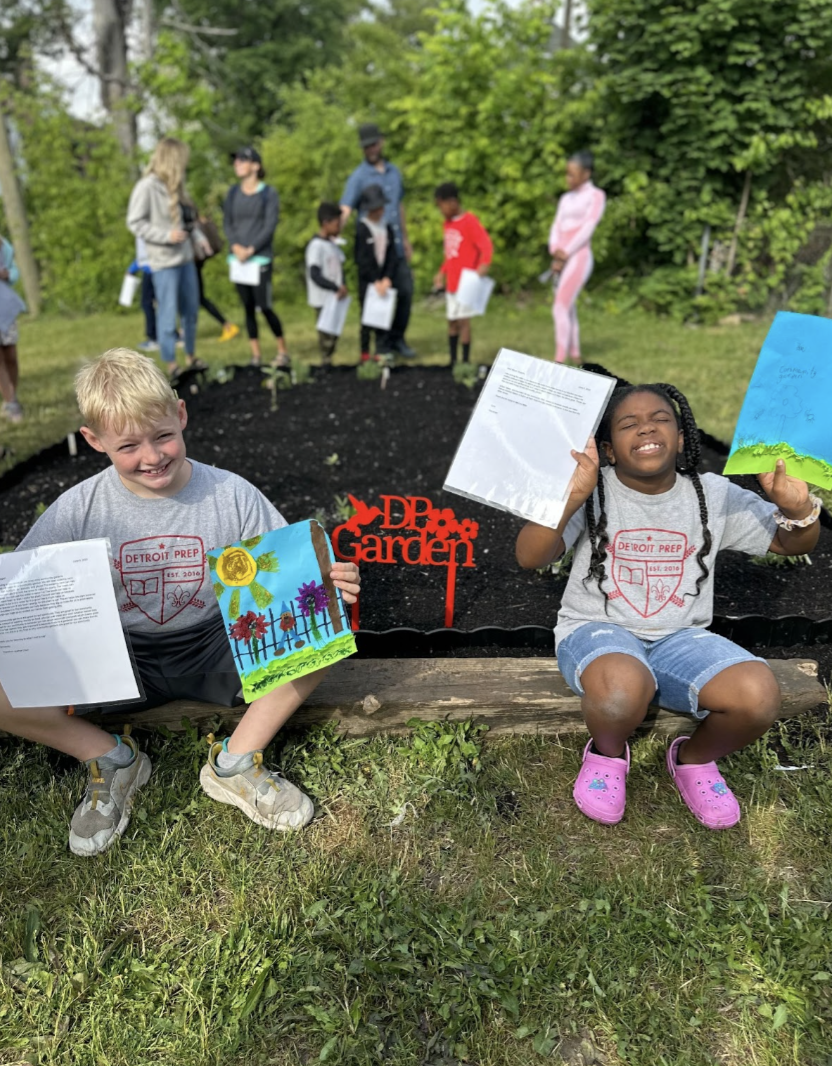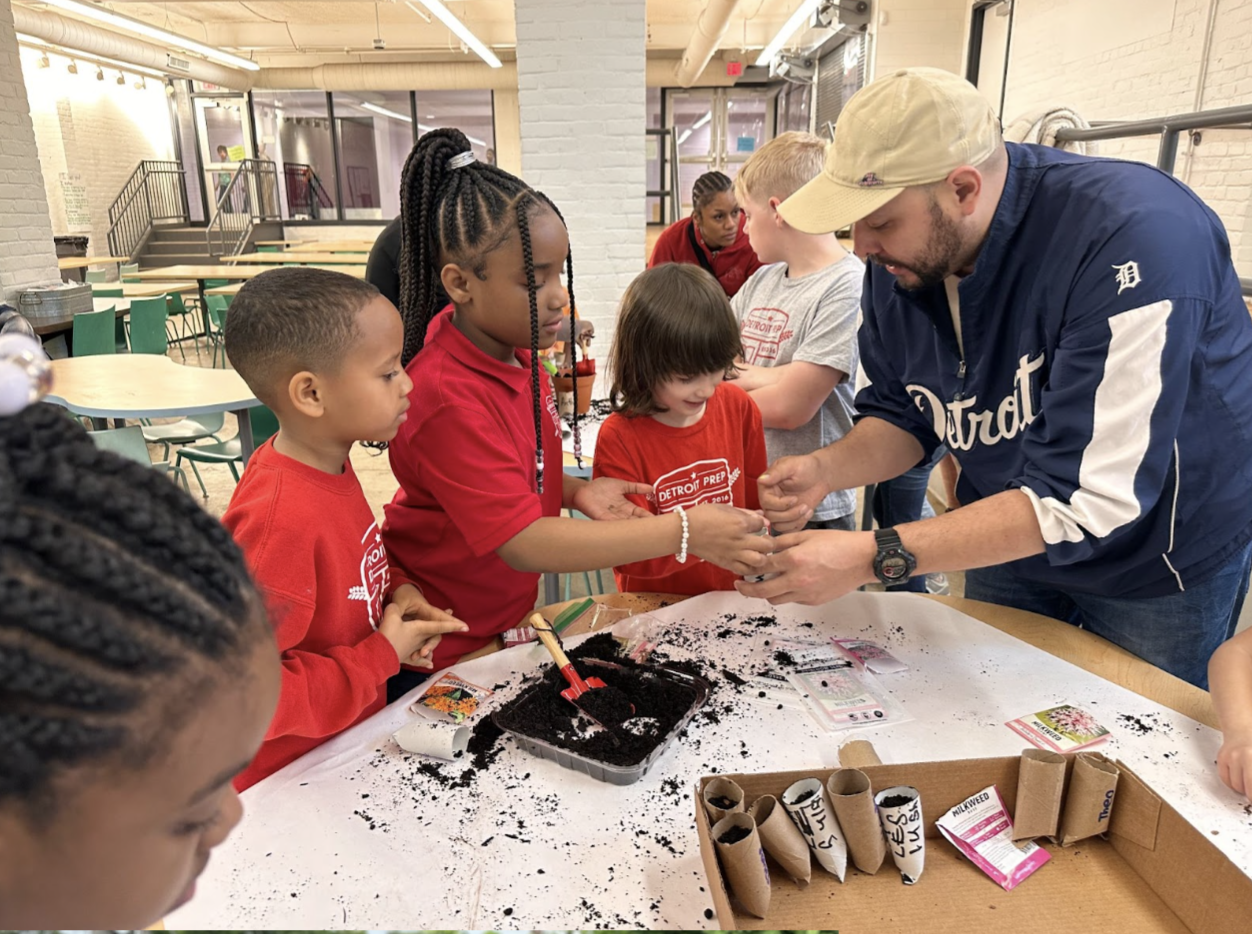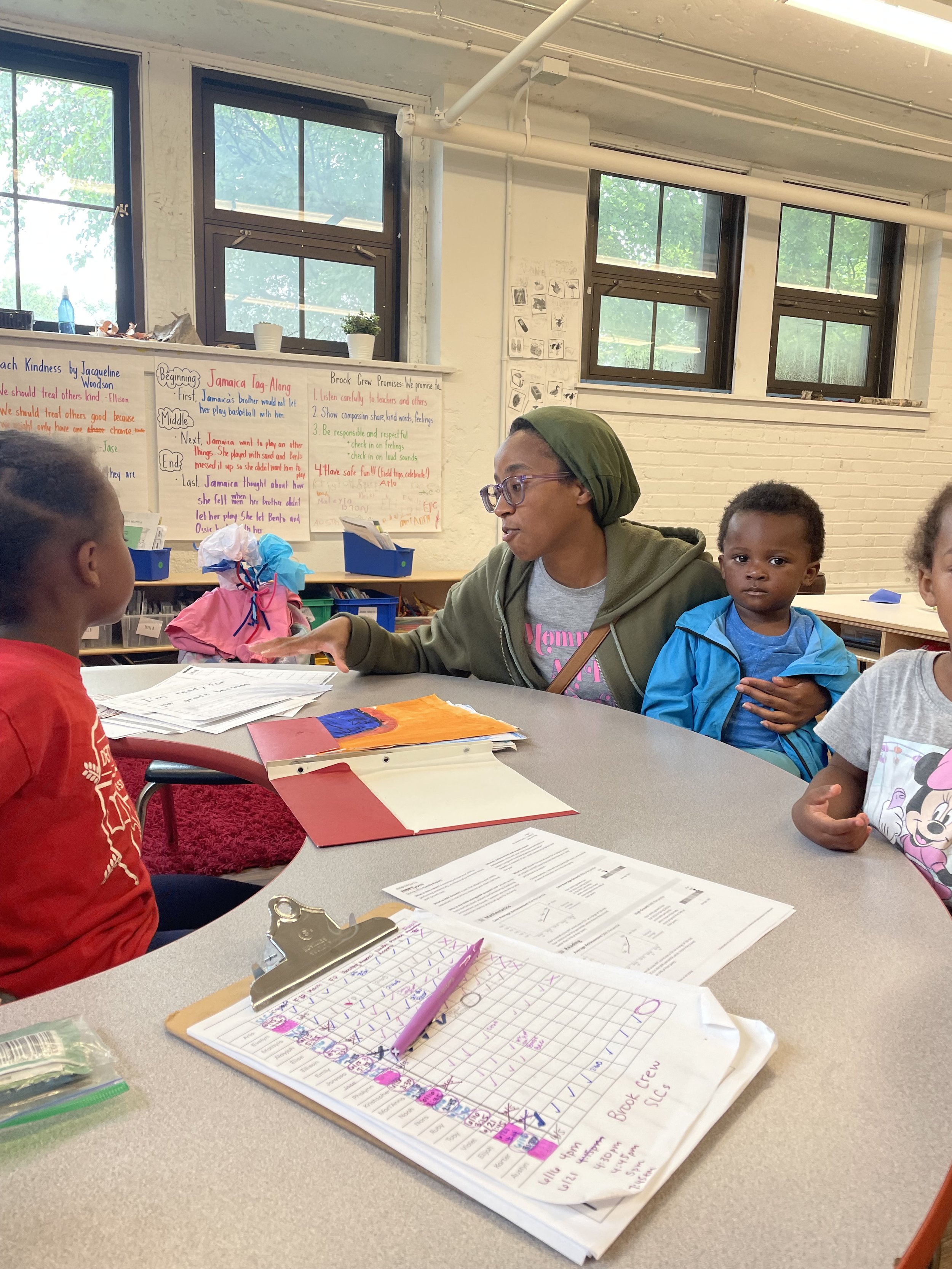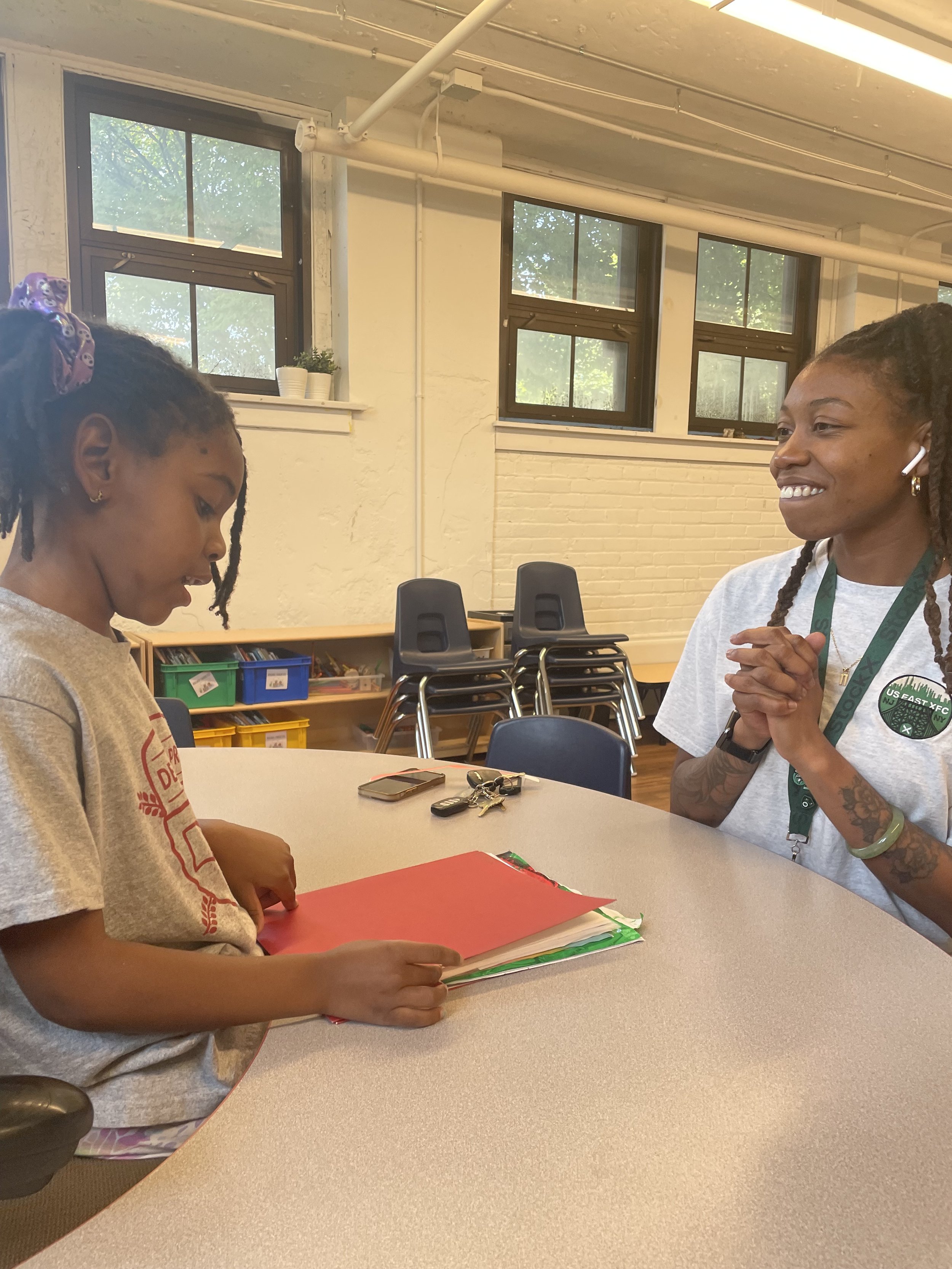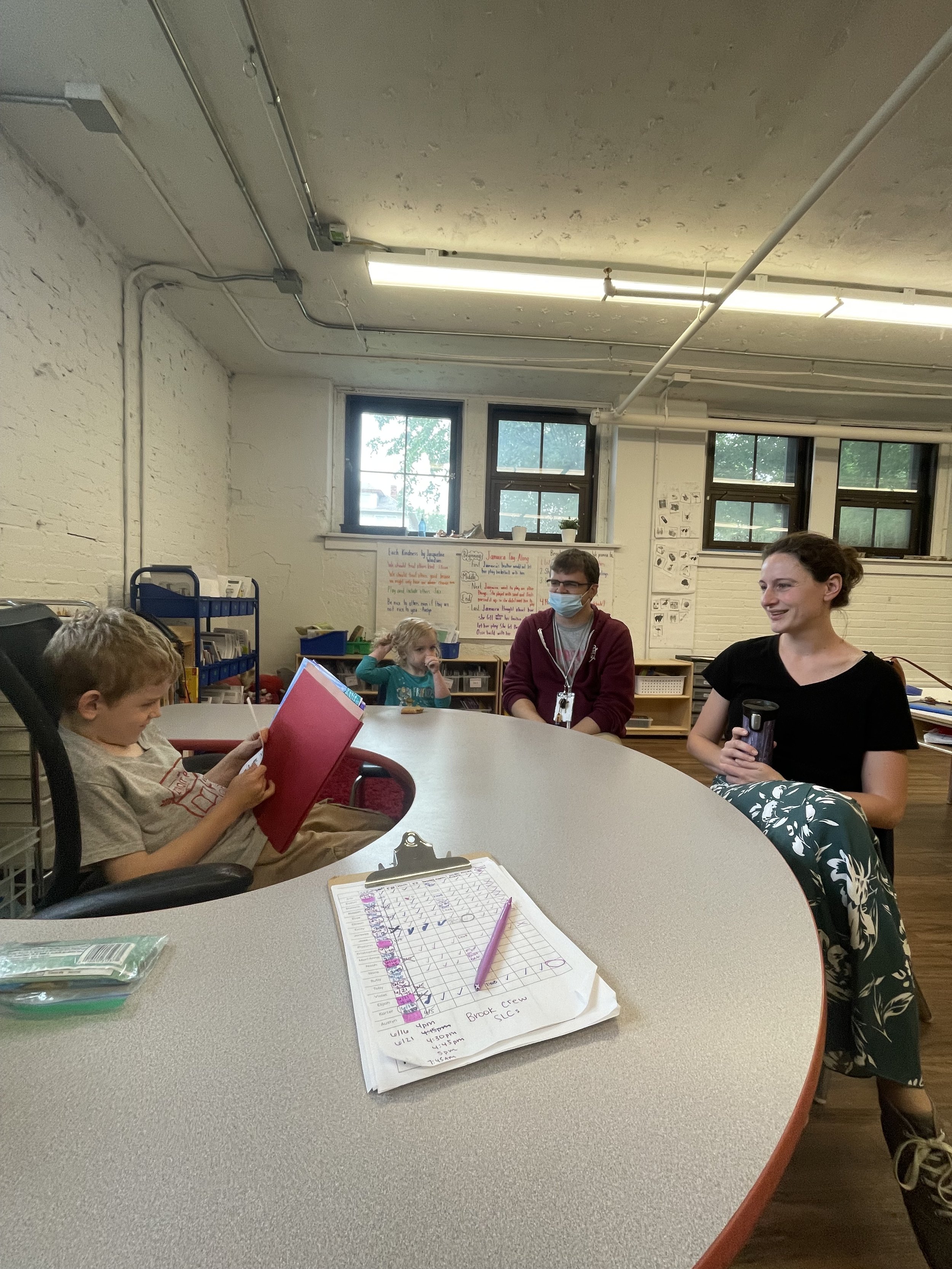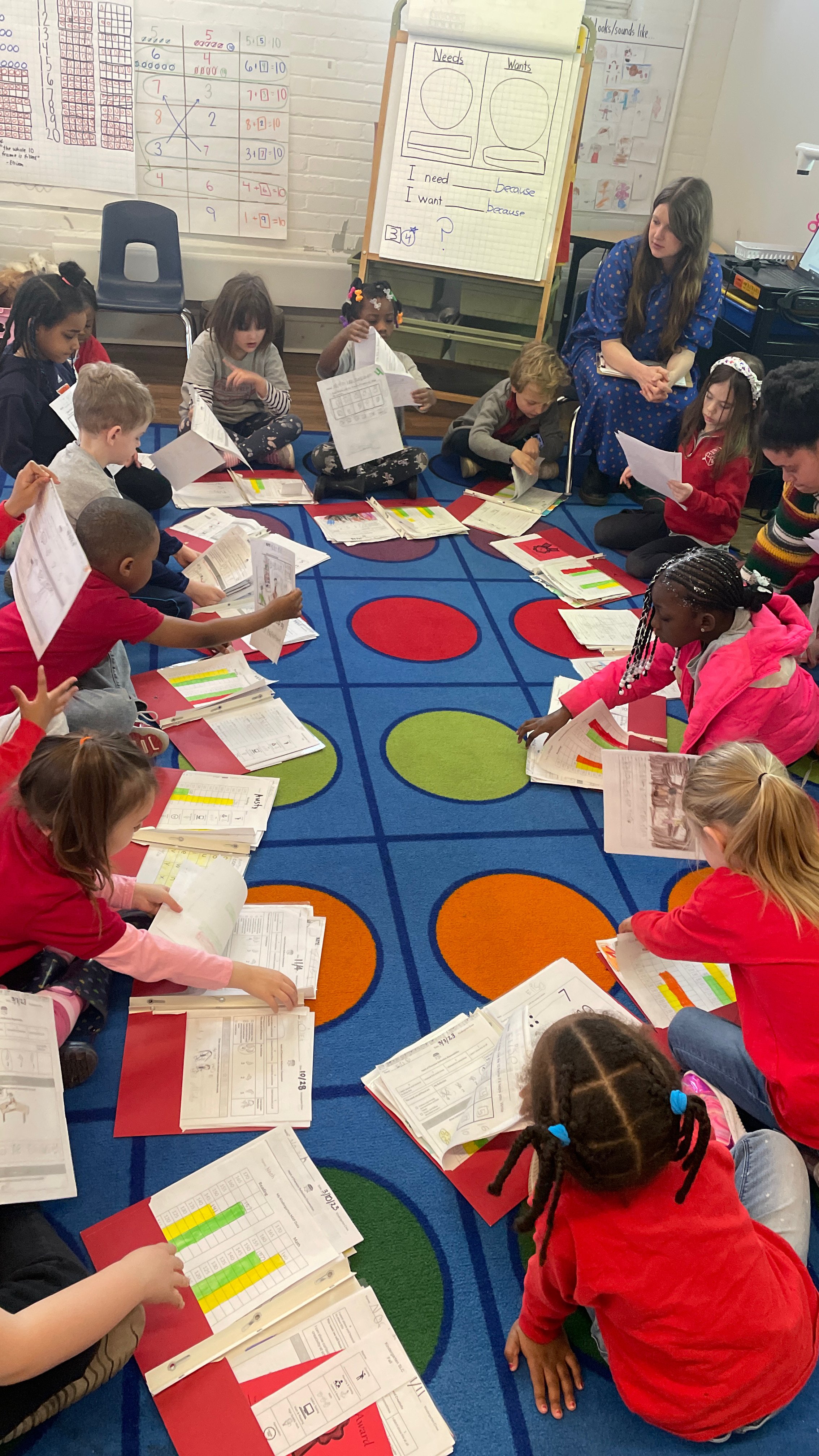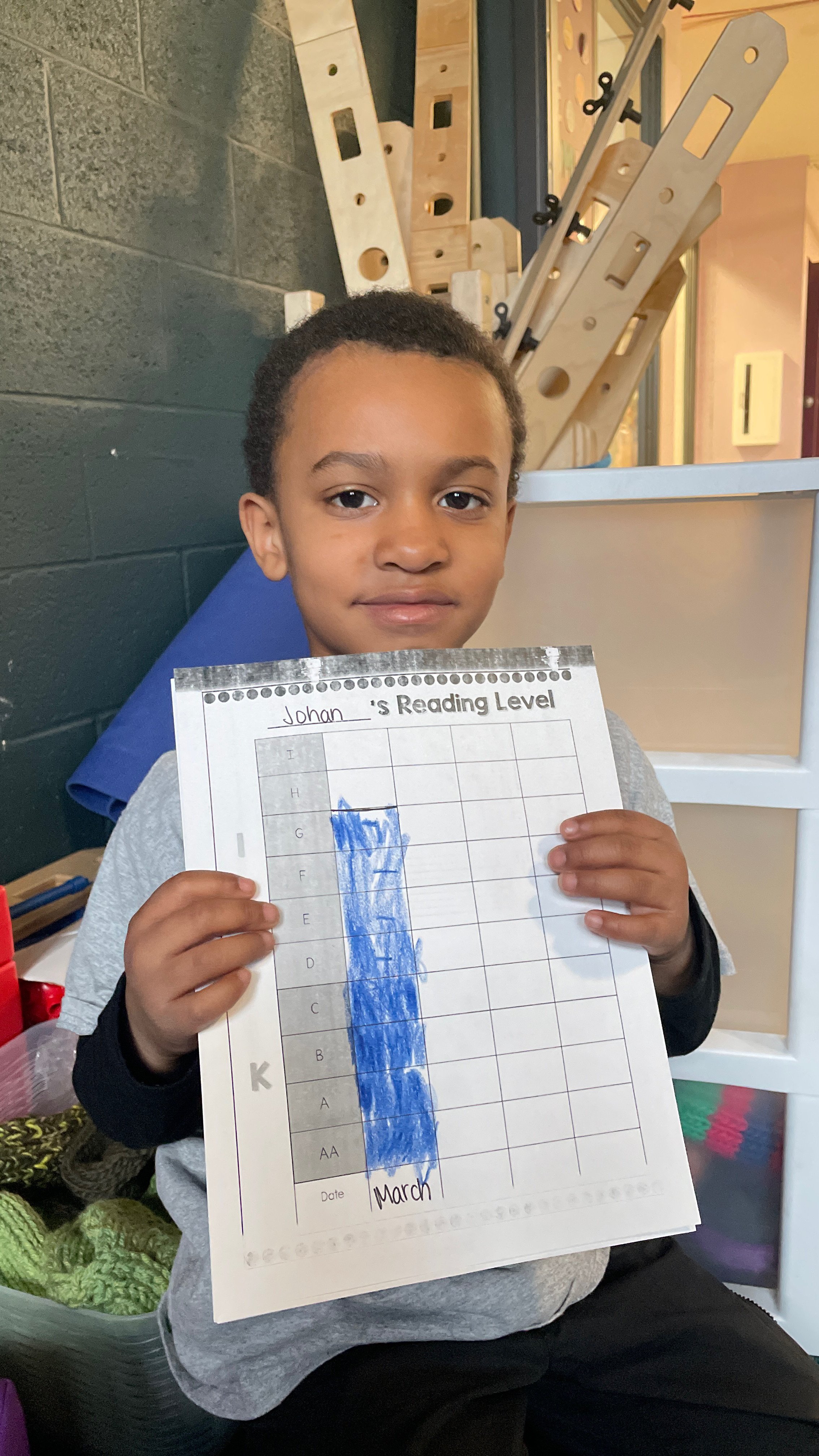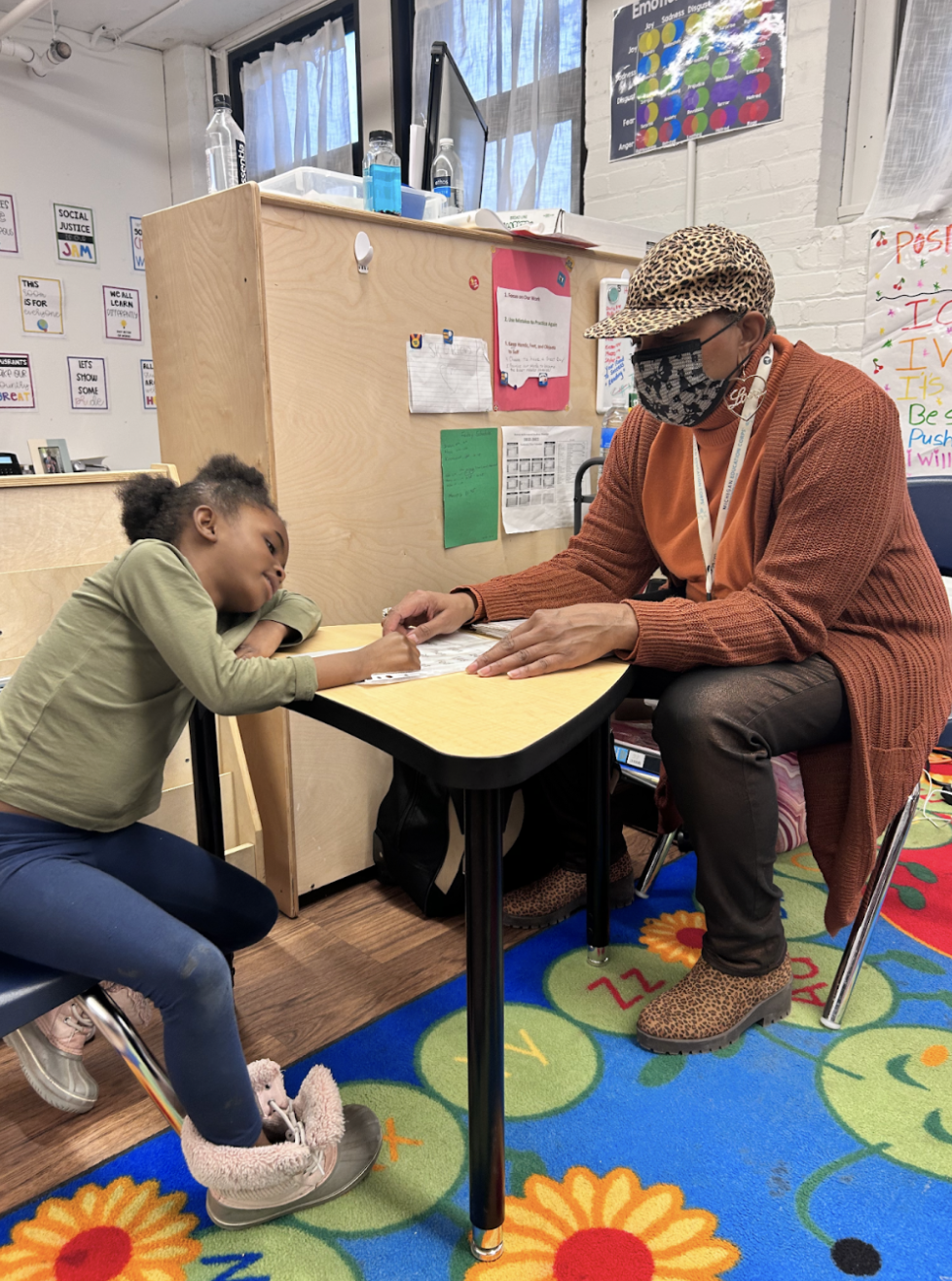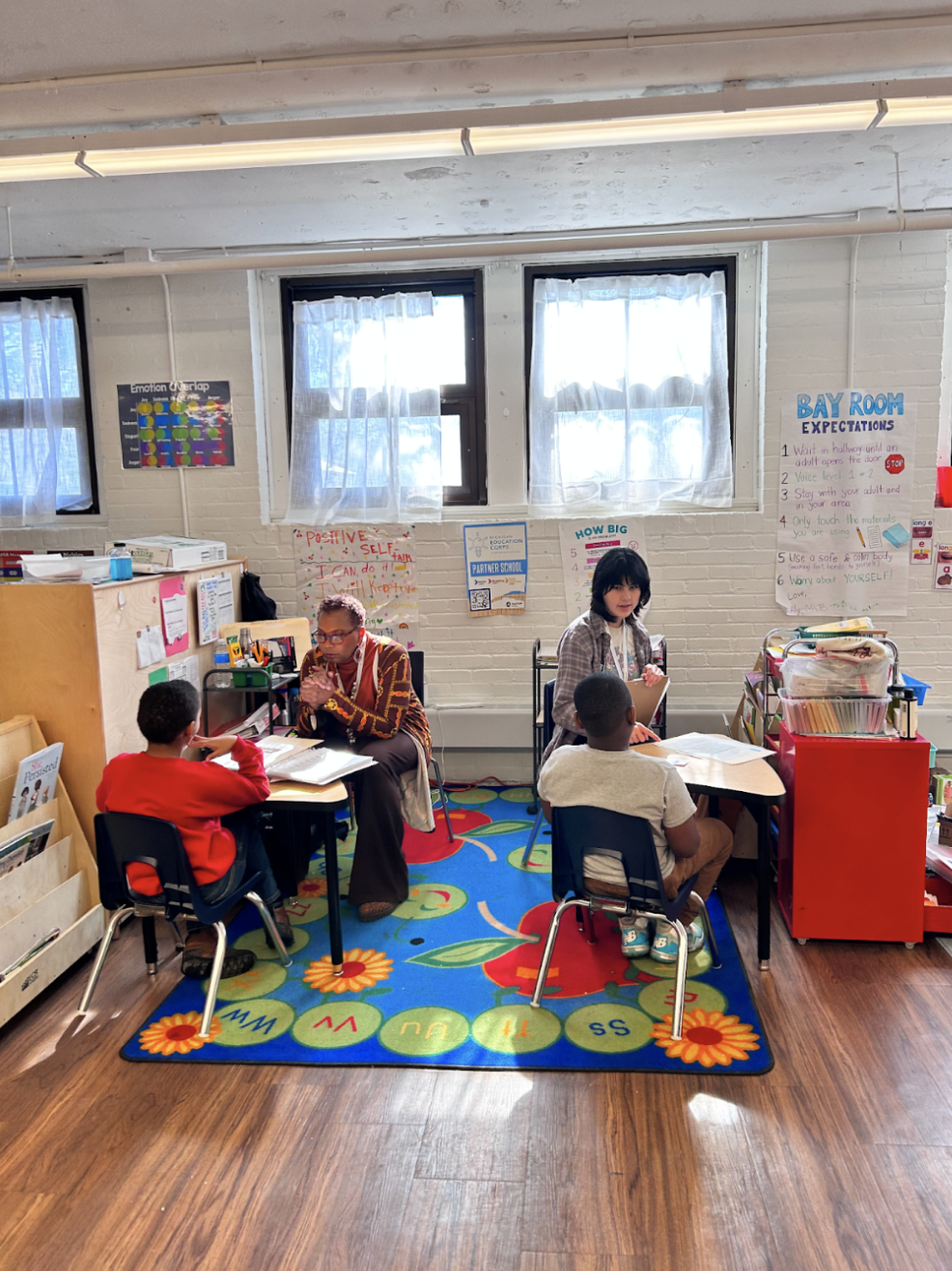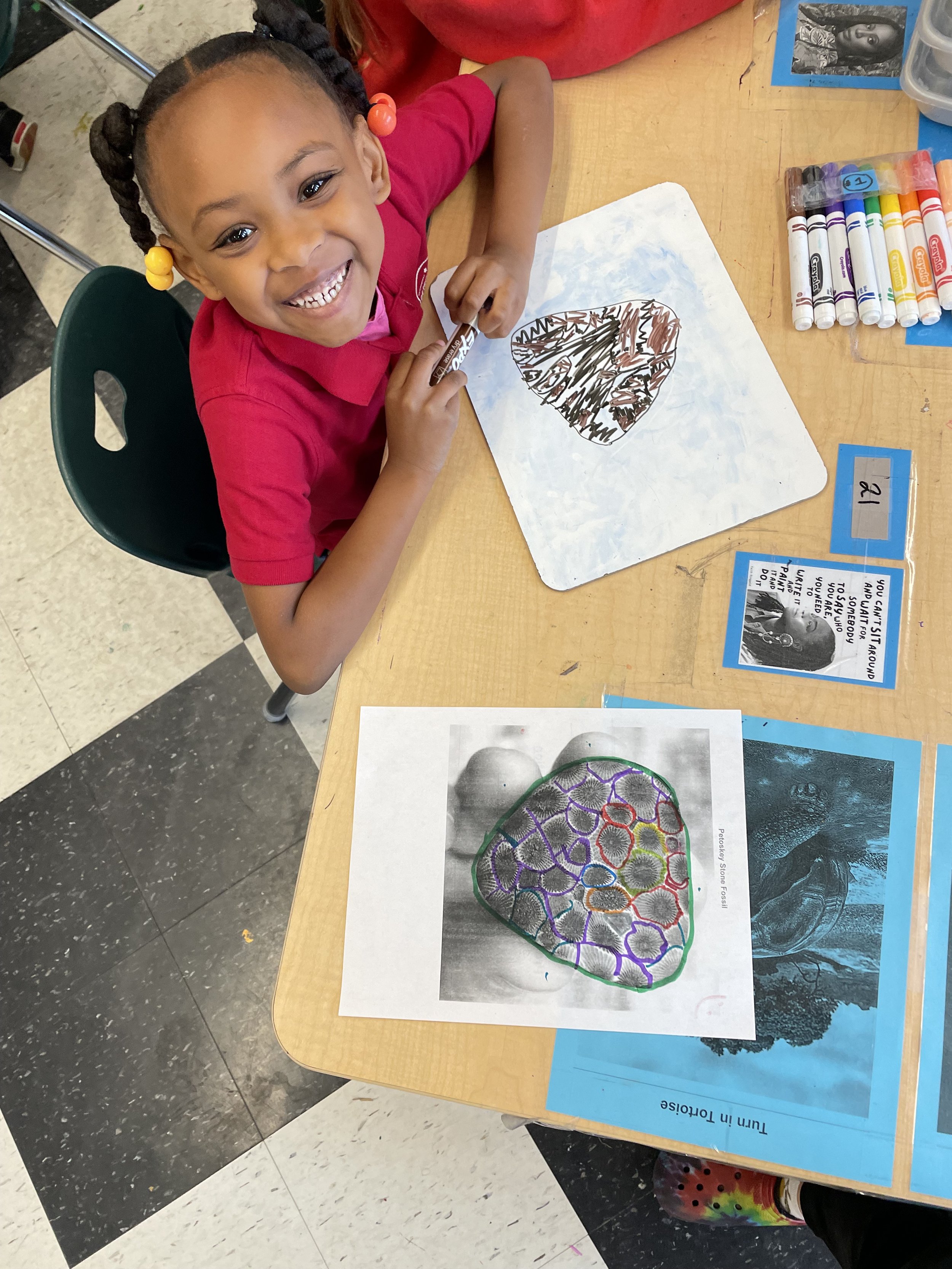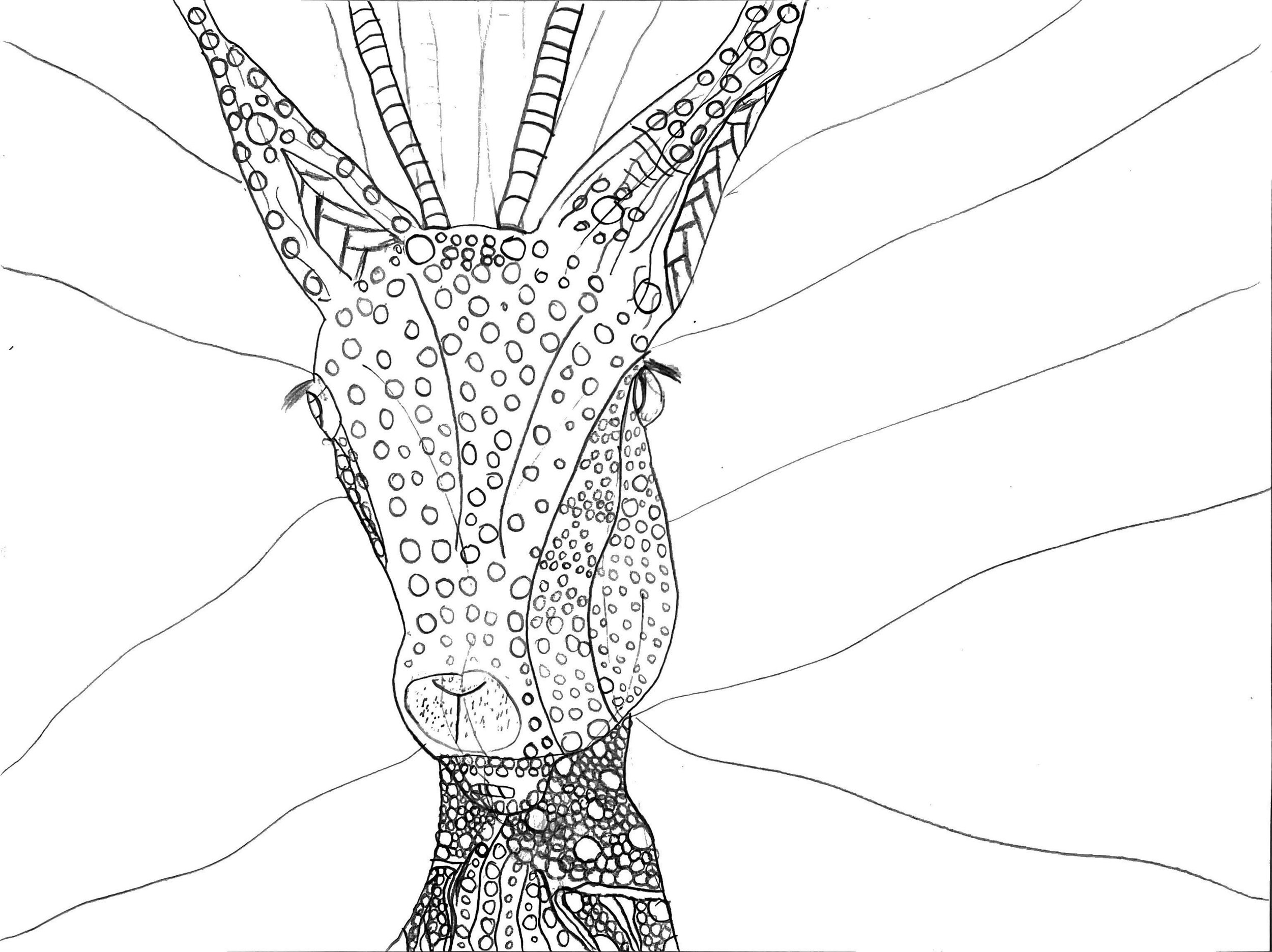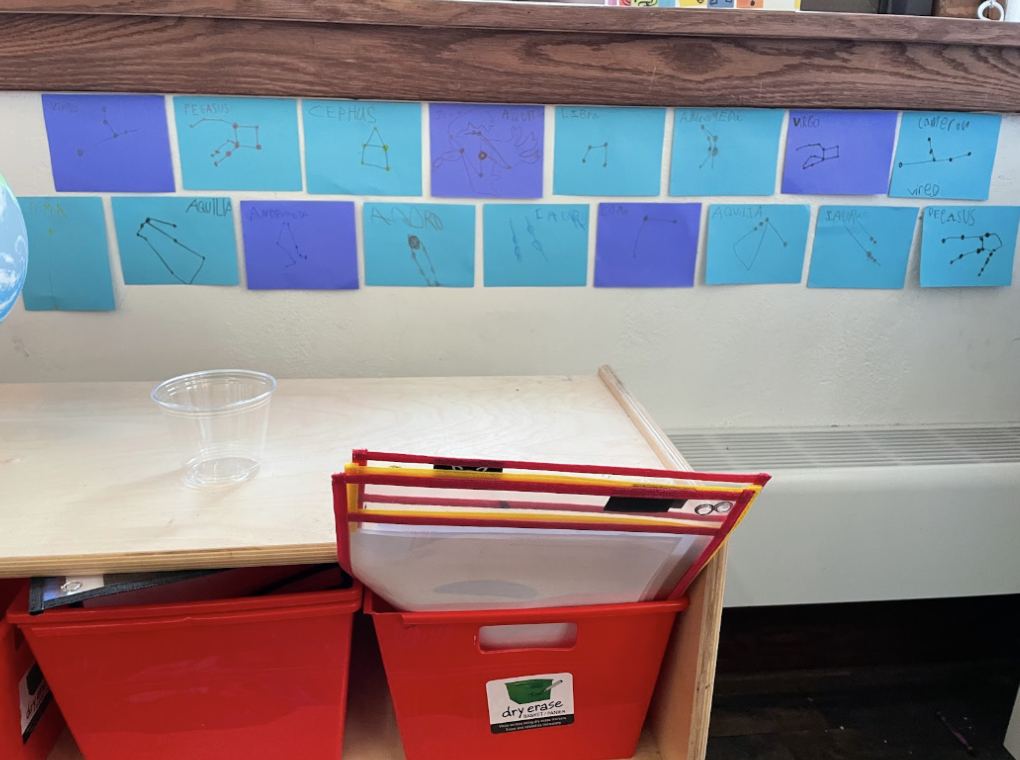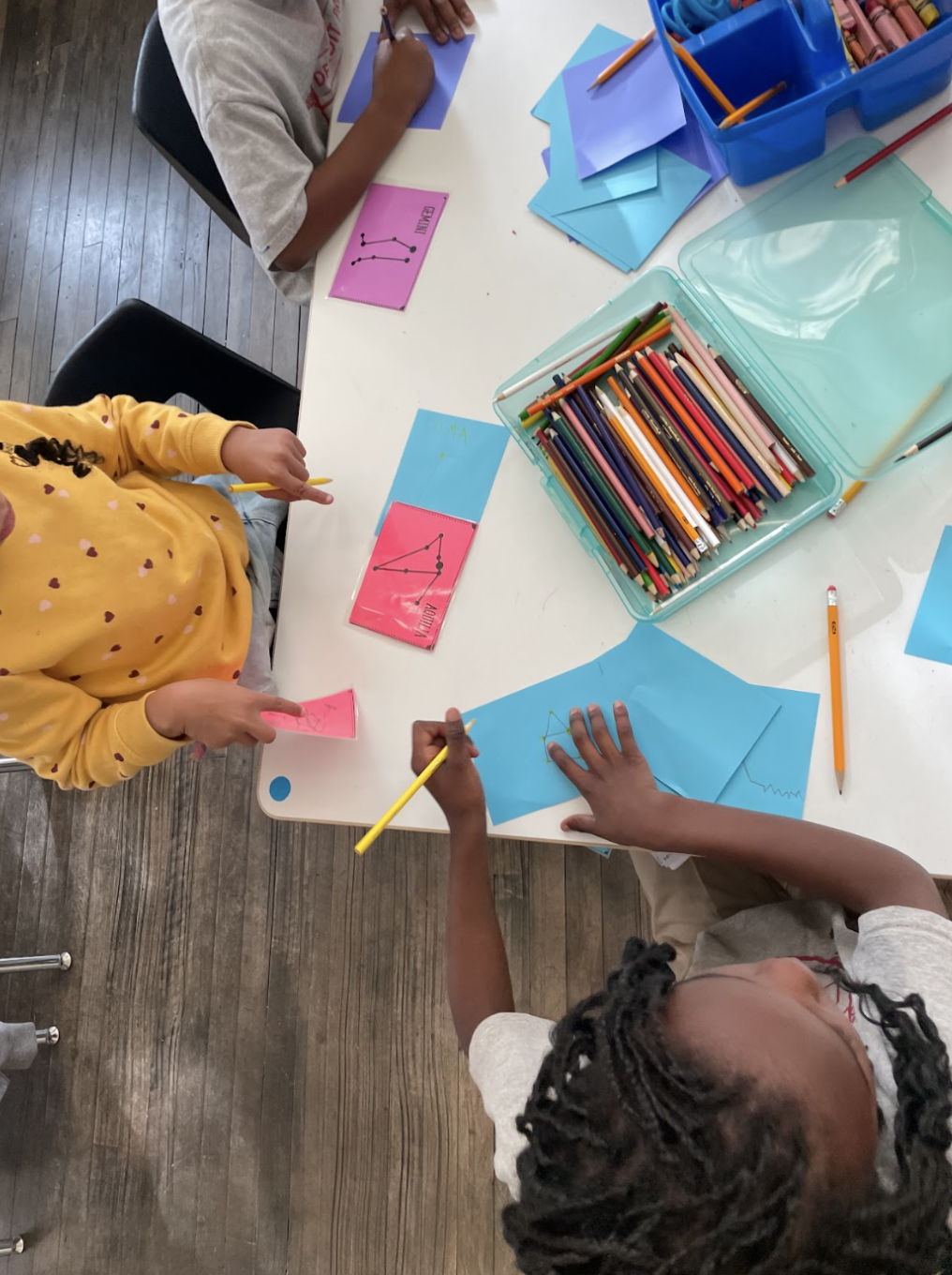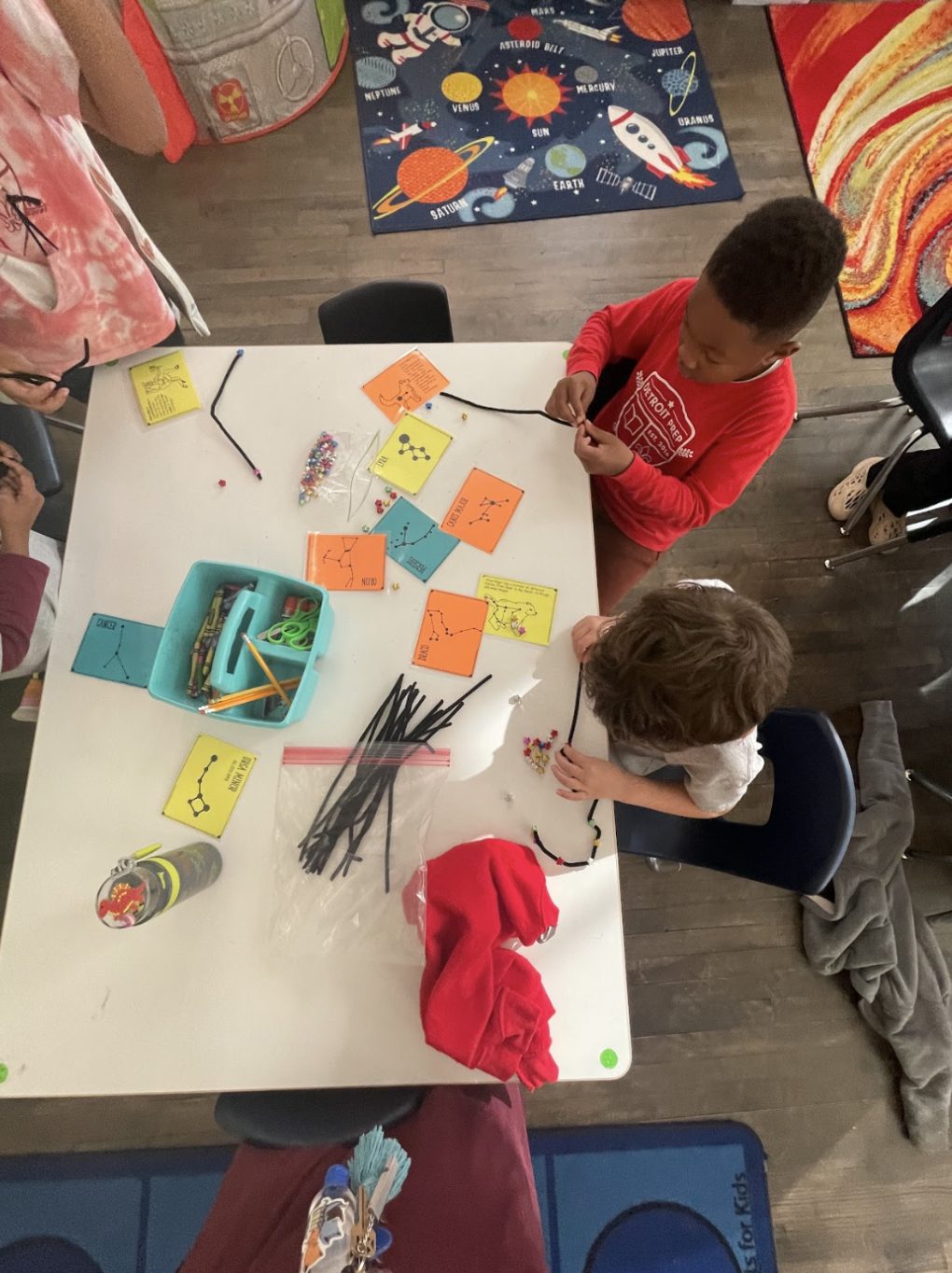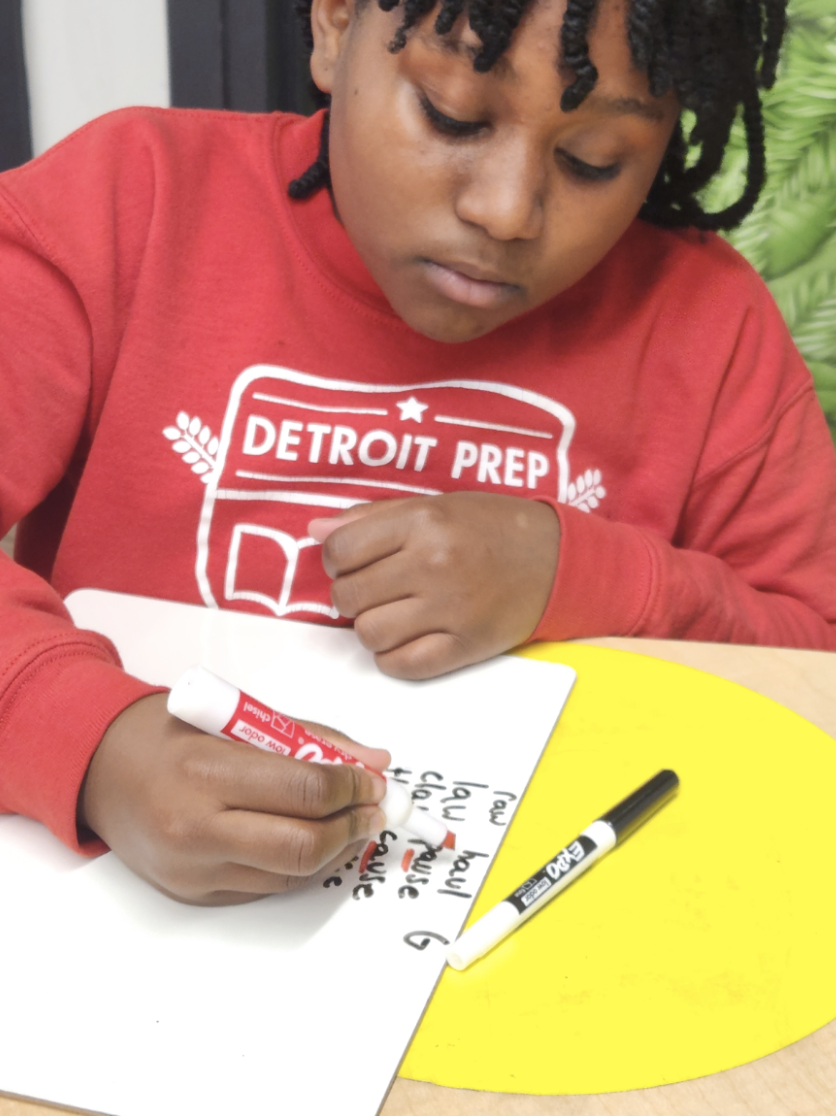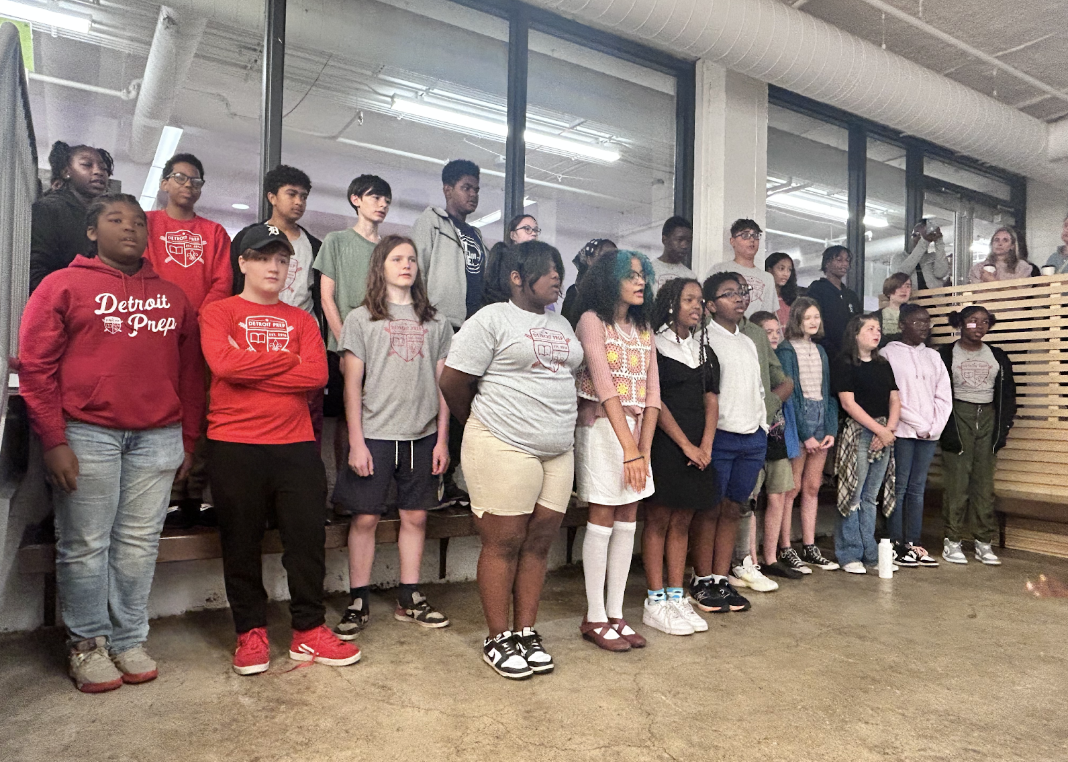Blog
Top 5 Moments of the Expeditionary Learning National Conference 2023
This November, I was lucky enough to be accepted as a presenter at the EL Education National Conference in Denver, Colorado! Amazing educators – including teachers, school and district administrators, instructional leaders, school board members, and curriculum specialists – came together to learn from one another about best practices to prepare students to contribute to a better world and achieve more than they thought possible.
Here are my Top 5 Moments of this transformational experience:
#5
Elena Aguilar’s keynote address. It was so inspiring to hear from educator Elena Aguilar on cultivating resilience to build equitable schools!
#4
Student ambassadors and presenters. Conference emcees were all students from EL Education schools – what an experience to hear from these youth leaders in their own voices.
#3
Hands-on tools to implement right away! From ideas for Expeditions and authentic final products, to ways to use AI in the classroom, to collaborative problem solving and consultancy, I walked away with tangible tools to implement immediately.
#2
Learning from experts in the field – like our very own Ms. Fiske and Ms. Abbey! EL Education and Detroit Prep share the belief that teachers and school team members are the experts on how to build equitable, excellent schools. I am in awe of the experiences and ideas shared.
#1
Connecting and collaborating with brilliant and passionate educator friends from around the world! Connecting and reconnecting with the EL Education community and network year after year brings me so much joy, resilience, learning, sense of belonging, and sense of possibility knowing that we are in this work together. Having the mental and emotional space to learn together is a true gift and privilege – I’m so grateful for this opportunity.
Celebrating Neurodiversity Awareness Month
“With awareness, education, and reflection – we will have growth. If we all take one step, with remembrance that none of our footprints will be alike, we will see not only our mindsets healing but the world around us too.”
April is Neurodiversity Awareness Month, a space supporting and sharing the importance of our differences – specifically the differences in brain function and the honest truth that there is no singular way to describe how a brain “should” work.
If you are unfamiliar with neurodiversity, it is defined as “the range of differences in individual brain function and behavioral traits, regarded as part of normal variation in the human population.”
Normal.
Ugh, that word.
I have serious beef, or shall I say grievance, with that word.
Seriously, what is normal except what society has framed it as?
That is a rhetorical question.
Aren’t we all different in some way? Maybe we all conform to what society has told us are “normal” behaviors – how we process emotional and social interactions, a traumatic event, or even the basics of learning something new. The reality is that none of us process the same. Our general input and output of information may appear the same but our lives impact the way we process every little thing. All in all, changing our brain function.
Neurodiversity awareness celebrates and embraces all people. It challenges the misunderstood, miseducation and usual stereotypes labeled across neurological differences. A neurodiverse individual did not have life events or cultures that shaped their brain function but instead began this way. One individual may live with a cognitive condition that impairs them from asking for resources or is unaware of the considerations they might need without being taught how to self-advocate – whereas another individual may be high functioning with exceptionally refined skills that are overlooked due to their inability to understand social cues or feel safe in a highly stimulating environment. The range of differences cannot be defined or put in a box.
With that, how can we cultivate a culture of celebrating a neurodiverse world? How can we work together to advocate and empower the differences around us and between us?
Educating one another and celebrating our differences creates a culture of equity and inclusivity. Assumption is our worst enemy. We must ask questions, we must take the time to understand our neurodiverse friends, family, students, and colleagues. Our response must be advocacy, to support their voices and the necessary resources that will empower them to succeed. The more educated we become, the more opportunity we have to create a truly safe space for all.
So as April comes to a close, in honor & celebration of Neurodiversity Awareness Month, I urge
you to take a time of reflection and ask yourself these questions:
- What preconceptions do I have regarding neurodiversity?
- How can I continue to educate myself?
- What societal “norms” have I placed on myself and those around me?
- What first step can I take in creating a culture of inclusivity right now?
With awareness, education, and reflection – we will have growth. If we all take one step, with remembrance that none of our footprints will be alike, we will see not only our mindsets healing but the world around us too.
Here are a few good reads & resources to get you started –
● The Whole Brain Child, By Daniel J. Siegel, M.D. & Tina Payne Bryson Ph.D
● Raising A Sensory Smart Child, By Lindsey Biel M.A., OTR/L & Nancy Peske
● The Power of Neurodiversity: Unleashing the Advantages of Your Differently Wired Brain, By Thomas Armstrong, Ph.D
● Moving Forward, By Jacki Edry
● The Kissing of Kissing, Poems by Hannah Emerson – identifying as a non speaking autistic poet, she invites you inside her mind encouraging you “to bring your beautiful nothing” into the light.
Friendship Boundaries
As our children grow, so do their friendships. Over time, it’s normal for friends to experience conflicts - everybody does! In middle school particularly, many students begin to branch out and explore different interests, often resulting in new friendships. Students may experience a wide range of emotions as they begin to see their friendships shift - from excited to sad to hurt or nervous. As adults, we can talk to our children about these changes and provide support to them by listening, nonjudgmentally, to our children and reminding them that this is a normal, human experience.
Friendships are relationships that should make a person feel safe and respected, and oftentimes when students come to me about conflicts with their friends, we start by discussing what a boundary is. Boundaries are lines you shouldn’t cross. Sometimes in friendships, people make mistakes and they cross the line with a behavior that makes others feel disrespected. These are “friendship boundaries.” Friendship boundaries divide disrespectful or annoying behavior from respectful and fun behavior.
Below are a few friendship boundaries that can often be crossed:
Touch Boundary: Playful vs. Hurtful (playful touching like hair braiding with consent vs. pulling someone’s arm to drag them somewhere)
Joking Boundary: Funny vs. Mean (often times an attempt to be funny could ultimately lead to calling others names, or making mean statements to get a reaction from a friend)
Pride Boundary: Sharing being Proud vs. Bragging (when you’re proud of yourself, it’s normal that you want to tell your friends about it, but bragging makes others feel sad!)
Exclusion Boundary: BFFs vs. “No One Else” (a boundary is crossed when people get left out or tell others who they can or can’t hang out with)
Silly Boundary: Having Fun vs. Being Annoying (It’s fun to laugh with friends! Sometimes our friends get annoyed with us though, because we’ve either gone too far or it’s not the right time or place to be silly)
It’s important to recognize these boundaries so that when they are crossed, we can appropriately help our children try to resolve the conflict. Ask your child about their friendships as a way to make sure they are staying safe and respected!
TWR & Math
For your average 5th grade math student, there might not be a more dreaded three words than “explain your reasoning.” These instructions are often met with confusion, frustration, and expressions of “I know it, but I can’t explain it!” While the intention - push students to articulate their conceptual understanding of math content - is a worthy one, students are often left feeling stuck, unsure of how to articulate that understanding.
Last spring, I had the opportunity to participate in a professional development course led by The Writing Revolution (TWR). Since last year, our ELA teachers have implemented TWR curriculum as part of writing instruction to provide students with structured and scaffolded materials to support their sentence- and paragraph-level writing. This professional development focused on the use of TWR strategies as part of STEM instruction. Certain principles from literacy instruction were applicable to math instruction as well. For example:
Pulling sentence fragments (incomplete sentences) from content can serve as checks-f0r-understanding and help draw students’ attention to what’s missing
Sentence frames with conjunctions can lead students to determine cause and effect (“because”), discern a change of direction (“but”), and draw conclusions (“so”)
Sequence words (“first,” “then,” “last”) help students organize their thinking when describing a multi-step process
The TWR course helped me generate ideas for how to adapt our 5th grade math curriculum in a way that would better structure students to articulate their conceptual reasoning and construct new knowledge about new mathematical topics.
So, what does this look like in practice? Here is an example from our first unit of 5th grade math, in which we explored volumes of rectangular prisms and composite figures. During the lesson, students used sequence transition words to describe the process for finding the volume of a figure composed of 2 prisms:
Providing a structured, scaffolded space for students to describe the process during the lesson set students up to articulate their new knowledge on a more independent task. “Explain or show your reasoning” was no longer a vague directive; students had a familiar structure to fall back on to explain their reasoning!
Here is another example from students’ work on adding fractions with unlike denominators. Students were provided with the sentence starters “I agree with…because” and “I agree…but” to critique others’ mathematical reasoning:
An especially rewarding part of this process has been seeing students take greater initiative in incorporating more organizational strategies and justifying their solutions without prompting. Here is a recent piece of student work from our division unit!
In this example, the student is able to successfully carry out a clearly labeled series of steps for both multiplication and division, and justify their answer by explaining the connection between the two operations.
By integrating more structured writing into math class with the use of TWR strategies, our students are making new connections, strengthening their ability to think critically and sequentially, and taking new levels of ownership over their mathematical learning. We’re excited to see how these strategies guide our students towards becoming even better outside-the-box thinkers and complex problem solvers.
Farms & Gardens
In Second Grade, students explore an Expedition all about Farms and Gardens. This year, students kicked off their learning with a visit from Urban Farmer Willie to learn about the work that he cultivates at his Urban Farm. Students had the opportunity to engage in Farmer Willie’s presentation and ask questions afterwards. Some questions students asked were:
How long have you had your own farm or garden?
What is your favorite fruit and vegetable?
What types of fruits and vegetables do you grow in your garden?
How can I become an urban farmer?
After learning about Farmer Willie’s Urban garden, students then had the opportunity to transition to our cafeteria for some planting of their own. With the help of our wonderful caregiver, parent, and community members, students in second grade were able to plant and take ownership over the growth of their garden.
Kindergarten Student Led Conferences
What is a student led conference? A student-led conference (or an SLC) is a planned meeting where students present their data and growth with artifacts that support them. It is truly incredible what Detroit Prep students are able to articulate about their academic and character growth and their reflections on the process.
In Kindergarten, students as young as 5 will present and share their learning three times throughout the school year. This type of presentation takes practice and a deep understanding of what they’ve learned and how they’ve grown. Teachers work closely alongside students to help them prepare and practice with their peers. Teacher intentionally plan for this practice and rounds of feedback, so all students feel ready to share.
In the Fall, students will share their data and artifacts for letter & sound recognition, numbers and counting to 20, final products for Expedition 1. In the Winter, students will share new data points and artifacts that build onto what was shared in the Fall. By June, students are already a SLC pro and will use an agenda to move through each data point and artifact to share reading levels, addition and subtraction skills, and a brand new final product from their final expedition. Students are eager and excited to pull each piece out to share and then ask families “do you have any questions?”.
When students understand the criteria for success, have time to practice and receive feedback, they’re able to share a deep understanding of what they’ve accomplished and what they still need to work on. The final part of an SLC gives space for students to share what they are excited to learn next, an area they want to continue to grow in, and something they feel proud of. It’s important to be able to pause and take the time to truly look back and reflect on how you’ve grown and how you would still like to grow -- What an incredible skill to learn at the age of 5!
High School Transition: Practicing Timed Tests
While we visited prospective high schools throughout the spring, we also talked honestly with our students & families about other requirements for high school admission. For many of the schools that our students and families are interested in, an exam may be required for admission. However, many of our assessments at Detroit Prep are untimed; as a result, many of our students do not have experience with timed tests.
To address this, we partnered with our sister school, Detroit Achievement Academy, to simulate the exam experience that students might have. Students showed up to DAA (a school that many of them had not been to before) on a Saturday morning, were greeted by DAA staff leaders (who many of them had not met before), and took a timed, standardized test (which none of them had done before). This experience helped students reflect on what it felt like to be faced with so many unknowns and gave them an opportunity to practice testing at a more urgent pace. We are excited for our students to put this experience to the test when they take their exams in the fall!
5 Things to Do at Home on a Snow Day
Snow days are a highlight of my childhood. It is important that we make them fun and engaging for our children. Right away you picture being able to go outside and sled, make snow angels, build a snowman, and throw snowballs. Unfortunately this isn’t the case today! Most parents have to work and playing outside could be dangerous due to poor weather conditions. Here is a list of 5 screen free indoor activities that you can do when it isn’t possible to go outside.
Make it stand out
#1 Marshmallow Tower
This activity is fun for kids of all ages. It also heats up sibling rivalry. All you need is a bag of marshmallows and spaghetti noodles or toothpicks. They will have to get creative and figure out ways to stick the spaghetti into marshmallows to create a stable tower. Add an interesting twist and set a timer to see who can build the tallest tower within a set time limit.
#2 Make your Own Photo Booth
Time to strike a pose! Take some adorable photos in a home created booth! What a great way to take some silly pictures from the snow day to help remember the fun. Setting up is easy. All you need is your camera (iphones and ipads work great). You can build a tripod with home materials such as books/blocks to prop it up. Use dress up clothes, old Halloween costumes, silly sunglasses, boas, hats, fairy wings, silly headbands, etc. Costume jewelry can be the final touch to make it extra fancy.
#3 Snow Day Playdough
Playdough is our favorite center in the Lake Crew! White playdough is fun to make at home! The ingredients you need are 1 and ¼ cup of unscented white hand lotion or conditioner and 2 cups of corn starch. Mix them up together and voila you have snow play dough!!!! Have your kids make winter figures like snowmen. Find supplies around the house like glitter, sequins, ribbon, buttons, pipe cleaners, pom poms, etc.
#4 Make Your Own Puppet Show
Puppet shows are an all time favorite of mine. You can create your own puppets with materials from home like recyclables, socks, stuffed animals, popsicle sticks, and dolls. Have your kids think about a story to tell. This is an opportunity to add in story elements as well. A large cardboard box could be cut and used to create a theater. What a great way to let your kiddos creativity explode.
#5 Dance Party
Turn up the music and dance! If you are stuck inside on a snow day, have a dance party. It is a great way to burn off energy, have fun, and move to the groove. Have your kids pick their favorite music or create a playlist of their top songs. Make it extra fun by wearing costumes or creating instruments. Fake ones like an air guitar work as well!
Make it extra fun by adding in the freeze component. Have a sibling pause the music and everyone will need to FREEZE. When the music starts, time to dance again!
Partners in Literacy
At Detroit Prep, we have an incredible team of interventionists who support every learner in and outside of the classroom to meet their reading and math growth goals! Ms. Kira, Ms. Gloria, Ms. Lindsay, Ms. Johari, and Ms. Alissa work urgently and tirelessly to ensure that every student is growing every day through small group and one on one instruction.
This year, you may have also seen a few new faces working with our students on everything from letters and sounds to phonemic awareness – the fabulous Ms. Valorie and Ms. Helena!
Ms. Valorie and Ms. Helena are partners from Michigan Education Corps who worked with students in first through third grade to supplement and accelerate classroom learning and intervention. We are so lucky and thankful to partner with the Michigan Education Corps (MEC) through a generous grant from the Skillman Foundation to have one on one reading supports for students within the school day. Ms. Valorie and Ms. Helena also go above and beyond, working with students during their lunch breaks, and staying late on Fridays to join Community Crew!
Here are some of our students’ favorite activities to work on with Ms. Valorie and Ms. Helena in their sessions, that you can try at home with your learners!
Phonemic Awareness: Knowing that oral language is made of individual sounds and parts of words.
Blending - Say a word out loud and use chips, cubes, or pieces of paper as a visual model for each sound. Then, ask your child to blend the sounds orally to make the word!
Segmenting - Say a word out loud and ask your child to break it down into its syllables.
Phonics: Knowing letters and sounds, and being able to use these to decode words.
Letter/Sound Games - Say a sound, and have your child point to it and name the letter. Then try the reverse - point to a letter, and have your child say the sound it makes!
Word Blending - Write a list of simple words, or lay out some flash cards of simple words. Touch under each letter and ask your child to make the sound of that letter, then drag your finger under the letters and have your child read the word.
Fluency: Accurate, smooth, well-paced, and expressive reading of a text.
Duet Reading - Have your child read a simple, decodable passage (like these!), then take turns reading every other word together, and finally have your child read the passage again independently.
Newscaster - Practice reading with expression by asking your child to read a simple passage more than once, first to decode, and then with expression like a newscaster!
Student Reflection at Detroit Prep
If you are a student at Detroit Prep, you probably know how to write a Habit of Character reflection with your eyes closed. If you are a staff member at Detroit Prep, you gleefully pull a hand heart to your chest during Appreciations and sing your shine tune (whatever that might be). But, at Detroit Prep, reflection is much more than the weekly three sentences or daily compassion given to a friend playing at recess. Reflection is a process of accountability within our Crew for both adults and students. Our Habits of Character (HOCs); Compassion, Cooperation, Integrity, Responsibility, Perseverance, and Curiosity & Creativity; are values we as a Crew of both adults and students live within each day. The process of reflection on those HOCs may involve more tangible products, such as our weekly HOC reflection. However, the reflection piece can be as fleeting as a quick thumb-o-meter before moving to the next chapter in learning. Detroit Prep values both students and staff’s assessment of their learning and their behavior to create progress and mastery. It is something that is hidden but constant within our community of learners (and we consider both students and staff among those learners!).
In Kindergarten, students learn two different debrief protocols to reflect on their learning: Turn & Talk and Four Corners. During a Four Corners debrief, students think deeply about the criteria for success within their learning target. The criteria for success has been unpacked throughout the lesson, so students know exactly what they need to be able to say and do in order to master the target. During the protocol, Crew leaders will label each corner of the room with a number (1, 2, 3, 4). Each number represents how much of the criteria they’ve met: 1 (none or a small amount) to 4 (mastered the criteria and can show additional understanding). In April, this protocol was used with a small group of 11 kindergarteners in a reading group. Their learning target was, “I can accurately read and answer questions about a level F text (Fountas & Pinell).” After 10 minutes of reading, they closed their books and thought about what they just read. Then, they completed a Turn & Talk to share: Who was the character in your story, and what problem did they face? After the Turn & Talk, students were asked to reflect on how well they were able to decode words accurately and comprehend what they read using a 1 (I struggled to read the words and couldn’t remember what I read), 2 (I was able to read most of the words accurately but didn’t remember what I read), 3 (I read most of the words accurately and could answer both comprehension questions), or 4 (I read all of the words correctly, answered the comprehension questions, and could provide more details from the story). After students chose their corner, they shared why they chose that corner and what their next step was to move from a 2 to a 3 or 3 to a 4. Crew leaders will use this data to determine next instructional steps for students. In this case, the reflections from students would determine who is ready to be assessed at the next reading level.
In fifth grade, we’ve been known to cluster students into inner and outer circle groups of 8 for culminating Fishbowl discussions. In the inner circle, or fishbowl, students begin the discussion. students in the outer circle listen to the perspectives and evidence of their classmates. Then, from the outside, they can tap in, replace, and build onto the time-stamped discussions. At the end of our WWII: Internment Camps module, students used this protocol to answer one of our open-ended guiding questions: How can we learn from history to apply the lessons of Japanese internment to our own community and lives? Evidence was used to back up opinions and inner circle members summarized and built off the group’s talking points. I took notice when I heard, “If Michigan Roundtable was around when the Japanese Americans were interned because of their race, then they would have worked to stop this injustice. After internment, no one wanted to hire Japanese Americans. They faced discrimination in their communities and workplace. No organization stood up for them, not even our own government.” Another built on, “ I think we need to overcome discrimination and racism. Honor our ancestors, celebrate diversity of race, religion, and cultures.” After building background knowledge, listening to an expert, reading novels, researching, and producing high quality final products; students were prepared to have this kind of open ended discussion. It solidified their learning and the debrief which followed came to highlight strengths of the discussion and segwayed into making suggestions on ways to engage each other more meaningfully leading up to our Celebration of Learning presentation on the same topic.
By seventh grade, students are regularly asked to reflect on their learning progress. After summative assessments, they are given a chance to receive teacher feedback and to self-identify specific questions that align to learning targets that they have mastered or that they need to continue working on. As students become more skilled in this area, they are also able to set specific learning goals for themselves and reflect on what support they might need to reach those next goals. For example, in a recent Mid Unit Assessment Reflection, a seventh grade student was able to name a learning target he is still struggling with in Expedition (I can analyze how an author develops and contrasts the points of view of characters and narrators in a literary text). students then give and receive feedback on their reflection. For this student, a peer helped him identify the question that best showed how he struggled with this specific target (“... Question 1 where I was confused and I couldn’t convey the contrast between the characters”). Then, at his Student Led Conference that same month, he was able to ask his teachers and family for support in this area by making a connection to a goal he had for skills (determining the meaning of words and phrases in a text). This arc of reflection has helped our oldest students internalize their progress so that they can set goals that are individualized, ambitious and feasible.
Reflection is a priority here at Detroit Prep. However, we see that it makes a huge difference within the behavioral and academic progress of our students. After reviewing our data, we see a direct correlation between the commitment students have for their reflections and their self awareness. Further, our Crew leaders see improvements within their own instructional practices by using reflection practices. By quickly monitoring for progress, and trusting the integrity of those students’ reflections, Crew leaders can easily adjust lessons to the needs of their Crews. The constant reflection on daily and weekly data within our instructional teams also holds us accountable for the learning of our students. Although reflection protocols take time to create, we believe the forced practice eventually morphs into a natural reflex for our Crew, and it is certainly a key ingredient to our entire Crew’s success.
Women’s History Month Read Alouds
Are you looking for great books that feature female characters to read with your class or child in celebration of Women’s History Month? Look no further! Here is a list of a few books to jumpstart your reading. Each book recommendation is accompanied with a link or two to help guide and deepen your reading!
Picture Books with GIRLS in a Leading Role
Grace For President || Grade realizes that all of the presidents have been men and begins to question the status quo. Read this book and find out if Grace becomes President! Try this link to read and listen to the story online with Ms. Yumi!
Rose Revere, Engineer ||
Amazing Grace || Are you thinking about becoming an engineer? Before reading try watching this video about engineers. Try this link to read and listen to this fun story about Rosie online. If you like this story try Ada Twist, Scientist next!
4. Flossie & the Fox || Can Flossie outwit a fox?!? Try listening to this story. What do you predict? WIll Flossie be able to outwit a fox? Download this free worksheet on Teachers Pay Teachers.
5. Nasreen’s Secret School || Preview this book with google books and read the book here! If you enjoy reading this book you may also be interested in Malala, a Brave Girl from Pakistan.
6. Hope’s Gift || This historical fiction book takes place during the Civil War. Watch this trailer, or preview this book using google books to see if this is a good pick for you!
Picture Books Featuring Historical Women
My Name is Truth: The Life of Sojourner Truth || Read about the true story of Sojourner Truth. Watch this video after reading! After reading and watching, try to make your own cartoon about Sojourner Truth. Preview this book with Common Sense Media, a great resource for parents to preview books before reading, or try purchasing this book on Amazon.
Sonia Sotomayor || Check out this book about Sonia Sotomayor, a girl from the Bronx who becomes a Supreme Court Justice. Listen to the book here and read more about Sonia Sotomayor at the PBS Newshour! Or check out this video of Sonia Sotomayor on Sesame Street!
Brave Girl || Read to find out if you are brave like Clara Lemlich! Watch this trailer to see if this is a good book for you. Enjoy reading this book, based on a true story about Clara Lemlich, or try reading with this audiobook!
4. When Marian Sang || Marian Anderson was one of the most celebrated singers of her time. After you read about this amazing woman, listen to her sing or try one of these activities!
5. She Persisted: 13 American Women Who Changed the World || Read about 13 different women who persisted to make a difference in the world! This book was written by Hillary Clinton’s daughter, Chelsea Clinton. Read more about the book in the New York Times!
**This blog post is created for parents and teachers to use with their student(s) and is not intended for widespread dispersion.
All pictures were obtained through Amazon.com and credit for all suggestion links should be given to the original source.
Nurturing Young Minds: The Resilience Boost of Skills-Based Art Education in Childhood
In the tapestry of childhood development, the role of skills-based art education emerges as a powerful catalyst for fostering resilience. Beyond the strokes of a brush or the molding of clay, the acquisition of specific artistic skills becomes a transformative journey that instills perseverance, adaptability, and a sense of accomplishment. Today, we will explore the symbiotic relationship between skills-based art education and childhood resilience, unraveling the threads that weave together creativity and emotional strength. As we say at DP “Our work is excellent” and a skills based art curriculum is an important piece of that.
Building a Foundation for Perseverance: Engaging in skills-based art education requires dedication and practice. As children learn to master specific artistic techniques, they inherently develop a foundation for perseverance. Overcoming challenges in the creative process fosters a mindset that embraces persistence and resilience in the face of difficulties.
Navigating Challenges in the Creative Process: The creative journey is not always smooth, and skills-based art education acknowledges and embraces this reality. Children learn to navigate challenges such as mastering new techniques, handling different materials, and overcoming creative blocks. These experiences become valuable life lessons, teaching them to approach challenges with creativity and resilience.
Cultivating Adaptability and Flexibility: The diverse nature of skills-based art education encourages adaptability. Whether working with various artistic mediums, experimenting with styles, or facing unexpected outcomes, children develop a flexibility that extends beyond the art room. This adaptability becomes a key component of resilience, preparing them to embrace change and navigate the uncertainties of life.
Sense of Accomplishment and Self-Esteem: Mastering specific artistic skills results in a tangible sense of accomplishment. As children create art with intention and skill, they experience a boost in self-esteem. This positive reinforcement contributes to a resilient mindset, empowering them to face challenges with confidence and a belief in their capabilities.
Expression Beyond Words: Skills-based art education provides children with a unique form of expression that goes beyond verbal communication. When faced with complex emotions or challenges, the ability to express themselves artistically becomes a powerful tool. This non-verbal expression enhances emotional resilience, allowing them to navigate and process their feelings effectively.
Collaboration and Social Resilience: Many skills-based art education programs involve collaborative projects. Working with peers to create art fosters social resilience by teaching children to communicate, compromise, and contribute to a shared goal. These collaborative experiences build strong social bonds and enhance their ability to navigate interpersonal challenges.
Mindfulness and Emotional Regulation: Engaging in skills-based art education encourages mindfulness—a state of being fully present in the creative process. This mindfulness not only enhances the quality of artistic expression but also promotes emotional regulation. Children learn to manage stress, anxiety, and frustration through the meditative experience of creating art.
Preparation for Lifelong Challenges: The resilience cultivated through skills-based art education is an invaluable asset for facing the challenges of adolescence and adulthood. Whether in academics, relationships, or personal pursuits, children equipped with a resilient mindset developed through art education are better prepared to tackle life's complexities.
In conclusion, skills-based art education emerges not only as a platform for creative expression but as a nurturing ground for childhood resilience. As children master specific artistic skills, they embark on a journey that cultivates perseverance, adaptability, and a strong sense of self. In the ever-changing landscape of life, the fusion of skills-based art education and childhood resilience creates a resilient foundation upon which young minds can confidently paint the canvas of their future.
High School Transition: Visits to Prospective Schools
Our oldest students are only a few months away from the full high school admission process! As part of our preparation and support for students and families, our High School Transition Coordinator (Ms. Johari) surveyed parents & guardians at the beginning of the year to gauge which schools our families were most interested in for their student’s choice of high school. Based on this data, we arranged a number of visits to some of these prospective schools! In the Spring, our students were able to visit University Prep: Science & Math, Detroit School of the Arts, and University Prep: Art & Design.
To prepare for our visits, students first generated information they wanted to know about the schools, then created questions that would help them gain knowledge in these areas. On our visits, we were often able to experience small group tours and sample 9th grade lessons, as well as Q&A time with student ambassadors and teachers. As a result of these visits, many of our students were able to narrow down their preferred schools and their personalized goals for high school.
4th Grade Passage Presentations
At Detroit Prep, Passage Presentations are a rite of passage for students to share their reflections on personal growth, character development, academic progress, and quality work on their path to become leaders and world-changers. These benchmark presentations occur at the end of important transition years (4th and 7th grade), giving students a chance to celebrate progress and set goals along the three dimensions of student achievement. Passages communicate the unique story of each student’s journey, told in their own voice, exemplified by meaningful evidence to evaluate their readiness for their next chapter.
Preparation
Throughout the entire school year, students engage in reflections on their work and assessments in core content areas. Closer to the end of the school year, students begin typing their reflections, preparing their Portfolios and practicing for their Passage Presentations. Below are sample questions parents, caregivers, and community members were urged to ask students while preparing for their Passage Presentation.
What Habit of Character do you think you show the most often? How do you know?
What Habit of Character is the most challenging for you? Why? How do you know?
Which of your Final Products have you been the most proud of this year (or any year)? Why? How did feedback help you revise your work to make you proud of this product?
Which Expedition Topics have been especially interesting to you the last few years? What makes you say that?
What are your goals for the future? How did you choose those goals? What support do you think you’ll need to reach those goals?
Presentations
During their Passage Presentations, students introduce themselves, present their reflections of 4 Artifacts, how they’ve grown and shown our Habits of Character throughout their time at Detroit Prep. Presentations take 10-15 minutes, with time for questions at the end. Students also explain why they believe they will be ready for Upper School at Detroit Prep (5th-8th Grade) and what Habit’s of Character they will need to show the most to be successful in Upper School.
Allies for Radical Collaboration
At Detroit Prep, our mission is to provide a world-class, equitable education that will give a diverse group of students a foundation of academic excellence and character development. Our crew commits to making this vision a reality on a daily basis, and it’s something that requires constant learning and reflection on our practice!
Last winter, I was fortunate to participate in Allies for Radical Collaboration - a fellowship program developed with Black Male Educators Alliance and Henry Ford Learning Institute for white-identifying Detroit educators who lead, love, and nurture Detroit students from diverse backgrounds. I was humbled to have the ongoing opportunity to develop and implement culturally responsive practices in our learning community within the fellowship, beyond the work we already do in our school community through our Equity Groups.
Through this six month cohort experience, I continued to explore how my personal identity impacts my interactions with students, our school team, and our broader community. We engaged in asset-based community field experiences, such as immersive learning within other schools across Detroit, conversations and panels with community partners, and building a network of allies and critical friends that will support each other and push each other’s thinking to uncover my own gaps and blind spots.
We also learned culturally responsive, community-building strategies to try in our schools with a focus on nurturing strong relationships between students and staff, staff and families, and our neighborhoods! Some of the most fun and engaging elements were a set of “cup games” that build connection and a sense of teamwork.
I’m grateful and excited to continue my own self-work and part two of the cohort experience this summer and fall so that I can contribute in our crew toward a restorative culture based in hope, healing, joy, and equitable learning environments.
Hands-On Learning At Detroit Prep
Young children are constantly being told not to touch things and to keep their hands to themselves. However, learning should not be one of those times. Mammals learn how to survive by utilizing all of their senses and learning in school should work the same. Children should not (and cannot) solely rely on sight and sound to explore new concepts, and we shouldn’t expect them to. Incorporating tangible learning experiences into daily classroom routines and lessons can be more work for the teacher but the excitement and learning it creates from utilizing such tactics is well worth the time and effort.
As a Kindergarten/First Grade interventionist, I try my best to make learning tangible whenever possible. I believe that this helps students who learn in different ways bolster their skills and can be more fun for students who are behind. Here are some of the hands-on learning lessons I created this past year at Detroit Prep.
Here, the students are reviewing their letter sounds. I printed the letter charts in color, put them on a fun paper background, and laminated them. They’re using bingo chip guides to learn their letter sounds. We also use these for games like finding the sound that the word dog starts with or finding the vowel in the word bat. These small changes make learning more visual and exciting while adding a tangible aspect to the lesson that many students excel at.
During the school day, one thing you will rarely see me without is flash cards. I carry them during transitions, at school lunch, and during recess. I hand my students something like a flash card related to our lesson for our transition to my room. This gives them something to explore from our lesson and utilizes the 1-2 minutes it takes for us to get settled into the room.
At lunch, I often circulate and test my students on their site words, if they’re up for the challenge. It takes so little time, and they love reading them in front of their peers. I even carry more difficult sets so that anyone who wants to read them can. My intervention students are excited and proud to visit me at recess and read their site words on flashcards. Sometimes, I have to remind them that recess is for playing!
Many students love flipping over flashcards to see whether or not they got it right or wrong. Even when they’re incorrect, it’s a fun, tangible way to learn the things they may need extra help with in the classroom.
Making math tangible and exciting for early learners is easy and extraordinarily beneficial! This year, the first graders’ last expedition topic was pollinators, insects, and bugs. So, in my math intervention sessions, I used wooden bugs to create and solve math equations. Not only is this transition on topic for their other subjects in school, this is a tangible way for my students to count, add, and subtract with objects they’re familiar with. It shows students that the other things they are learning about are relevant to math, and that it can be fun, too.
There are a ton of fun math manipulatives out there, so it’s easy to find things that work for whatever the students are learning about at that time. From fruit to spiders, the possibilities are endless!
Early this year, I filled in for the Bumblebee Crew for a few days. I was excited to share some of the many fossils that I have collected in the Great Lakes because it’s something that I am passionate about and their expedition topic at the time was fossils. There were plenty of fossils for everyone to see, touch, and experience the change from dry to wet.
This is much more rewarding for many students than seeing pictures in a book or even watching a video because they can see it with their own eyes, not through a camera or a TV. Many of the students said they had never held a fossil before, which made the entire process worth it. It doesn’t have to stop at fossils, either. Students often learn about plants, seeds, or other botany, and it’s easy to bring in things that will help them visualize those lessons, too.
This last school year on Tuesdays and Thursdays I had the Hummingbird Crew for the expedition labs portion of the day. Their first topic was the solar system. I brought in lots of homemade playdough and space-themed cookie cutters. I also printed constellation cards so the students could construct them with pipe cleaners and star-shaped beads or draw the constellations on paper. Some took their constellations home to show their families, but some were excited to see them on the classroom wall. Making space physical can be difficult, especially for younger students, but it was a fun way for students to think about space on a smaller scale.
Another first-grade expedition topic this year was Community Values and Traditions. I brought in a town map mat with buildings, houses, and people to place on the floor for the students to play with. I also provided large sheets of paper so that the students could make their own towns and objects for the students to place to make the town 3D. This made it easier for students to visualize a town setting, which was helpful for many of them.
One of the best feelings in the world as a teacher is when you see genuine excitement and learning on the faces of your students. In a world that’s controlled by technology and screens, there is still a need for tangible connections in the classroom and at home. The excitement on any kid’s face, when they receive a book they’re excited about, is priceless. This last photograph showcases a group of kindergarteners with bracelets that I made. They are vowel bracelets, which will help them learn and remember their vowels. I’ll be the first to say that I can be a bit extra when it comes to making learning fun, but smiles like these make it all worth it!
Factoring Life Long Lessons in Social Justice
The adults of tomorrow continue to be shaped by past and present social justice warriors. If you’re a 2023-2024 5th grader at DP you’ve already gotten the chance to consider before the ‘24 Summer Olympics the factors that contribute to the success of professional athletes as leaders of social change. In our Expedition Module called “Athlete Leaders of Social Change” we read about a good number of professional athletes who have been leaders of social change. Students began their studies by learning about Jackie Robinson through Promises to Keep: How Jackie Robinson Changed America, written by Jackie’s daughter, Sharon. We gathered factors that led to Jackie Robinson’s success in leading social change and then developed an opinion on which factor (or factors) were most important in his success.
Students finished the Expedition by reading about other athletes who were leaders of social change, beginning with University of Michigan’s very own Jim Abbott. Our scholars researched, compared, and contrasted the factors that contributed to the success of the athletes they studied with those of Jackie Robinson. Students then worked in groups to become Experts in one athlete and created a biography page along with a portrait for their athlete, which they then turned into a book for future classes.
A key take away from this module was that our field study provided us the opportunity to grow in appreciation and admiration for Khali Sweeney who founded Downtown Boxing Gym on Vernor Hwy in Detroit. Khali Sweeney, is a social justice warrior. He’s someone who has a solid track record of uplifting and inspiring his after school students and local community. As our 5th grade students studied historical athletes we also were able to see first hand how Khali’s boxing gym has become a safe, transformative place that’s meant to develop a greater good not just for the students he serves, but for their families, and our greater community here in Detroit.
Khali would say that boxing was used as an “icebreaker” to shape his urban community. Our DP 5th graders are impressionable and came away from their field study at the gym with solid examples of how Khali Sweeny used visionary leadership to learn from his mistakes which students admired. They also were able to identify how important discipline is as a factor in the field to create change on such a scale as the Downtown Boxing Gym. We want to keep giving shout outs to DBG and support their cause because there’s a waiting list of 2,000 students who long to be led and supported by their after school programming. Students from Detroit can’t afford to be on waiting lists. We can’t afford not to continue to support our city’s youth.
Explore like we did what social change looks, sounds, and feels like at the Downtown Boxing Gym and consider contributing if you can at @dbgdetroit.org
Strategies & Tips for a Successful Homework Routine
For parents and students alike, homework can sometimes present lots of challenges. From fitting homework time into an already busy schedule to helping children manage stress, creating a smooth and effective homework routine can be difficult. I’ve noticed that students are either struggling to complete the work, feeling frustrated by the assignment or unable to finish the task within the available time. So, If homework time has become a daily battle for your family, you aren’t alone. With the right approach, a few smart strategies, and tips from two of your favorite DP interventionists, your family can make homework a positive part of your everyday routines.
Does homework support learning at school?
The benefits of homework have been debated by teachers and parents for years as the very word evokes negative feelings to everyone involved, students, parents and teachers. Although many people think of homework as doing more harm than good by causing large amounts of stress, others believe that it has great advantages. Homework is a great way to practice and reinforce skills already learned. It also helps to develop responsibility. Being assigned work one day and knowing that it has to be done by the next day or by the end of the week, students will develop a sense of time management. In some classrooms, turning in their work on time is encouraged and rewarded with cool prizes! Which leads me to the first of five tips for a successful homework routine:
Get to know the teacher - and what they're looking for. Attend school events such as Student Led Conferences, Celebration of Learning, and volunteer to run a small group. Communicate about their homework policies and expectations of their classroom. Sometimes homework expectations can vary from classroom to classroom.
Create a homework station. Choose a space in your home free of noise, distractions, and interruptions that is well-lit. Keep the most common supplies-paper, pencils, glue, scissors etc.. within reach. You’ll find easy DIY ideas here.
Set a regular homework time. Some kids work best in the afternoon, following a snack while others may prefer to wait until after dinner. Set aside an appropriate block of time (10-25 mins depending on age) for homework every day so that your child knows what to expect. Set a digital timer like this one and encourage your student to focus and beat the clock!
Students do the work, Not Parents. They won't learn if they don't think for themselves and make their own mistakes. Think of homework as “practice” Parents can make suggestions and help with directions. But it's a kid's job to do the learning. Consider circling the problems that are a challenge and communicate that to the teacher for added support and clarification.
Break large tasks down into smaller chunks. Your child may not know how to start a major task, which could trigger procrastination or feelings of defeat. Break larger projects into three or four smaller chunks. Within one homework session complete one chunk. Students can feel a greater sense of accomplishment by completing each small step toward the larger whole.
How long should homework take?
The amount of time homework takes to complete depends on the grade level. In K-5, homework should usually take anywhere from 15-30 minutes to complete. However, as your child’s grade level increases, so does the amount of time to complete homework. Studies have shown that students by the twelfth grade will have approximately 2 hours of homework to complete a day. This is due to the fact that students have multiple classes and teachers at this level. However, the average 6-8th grade student should have roughly 45-60 minutes of homework per night between both Expedition and Math. Most of the homework is to practice concepts learned in class that day and to reinforce the concepts taught.
Should homework be mandatory?
As an educator and parent, I feel that homework should be mandatory to the extent that it is a reinforcement of previously learned concepts. However, we don’t agree with students being given homework on topics not yet covered in class because it negatively impacts the student’s willingness to complete the homework and may cause undue stress on the parents and students.
Hands-On Learning at Home!
Want to help your kids hone their skills at home? This article is for you. In this blog post, you will read about different at home activities that you can create in the comfort of your own home!
1: Spelling Pattern and Math Reading Mats. This idea came from one of my favorite Teacher Tik Tokers Ms. Simpson! She created this very helpful and easy to make yoga mats and dice on a budget. The materials you will need to create your yoga mat are: A Yoga Mat (Five Below), Large dice (Amazon.com), and a Sharpie. Once you have all your materials and are ready to create your mats, ask your child’s teacher what are some spelling patterns or math skills they are currently working on or have worked on in the past to see which spelling patterns or math skills to add to your mat. This is a fun and easy way to get your child practicing what they’re learning in Skills and in Math! Watch this video to see how Ms. Simpson uses Spelling Pattern Mats in her class.
2: Pizza Fractions. Pizza is a great way to introduce or practice fractions to your child. And you can use real pizza (yum!) or create your own cardboard version of a pizza. The materials you will need are a cardboard cutout of a circle, sharpies, and scissors. On your cardboard cutout, you and your child can draw a pizza however you’d like. While you are drawing, don’t forget to add fraction equations on each slice or you can do it without the equations if your child is starting to learn what a fraction is. When you are ready to play, the adult that is playing will take away some “pizza slices” and ask “What fraction is this pizza showing?” Remember the denominator is on the bottom and the numerator is on the top! A denominator tells you how many are there if no slices were taken and the numerator tells you how many there are left after some slices were taken!
The best way I found for kids to get excited about learning is through activities that they find interesting. Both of these activities can be used interchangeably and for many different skills. They both work for math and for reading and are used to help students who need a little more of visual aid for it to really stick! I hope you found these helpful for your child’s learning journey.
Music Integration Across the Curriculum
At Detroit Prep, one important part of our mission is fostering a love of learning and passion for exploring and fulfilling their extraordinary potential as learners, leaders, and world-changers. One way that we do this is through integration of music across the curriculum - students work toward the learning target, I can relate my understanding to other subject areas and tie them together for high quality understanding and connections by stating evidence or artifacts.
Research shows that integrating music across the curriculum has a number of benefits, including increasing understanding of other content areas, improving memory, and strengthening coordination and motor skills! For more information, here is a helpful post to reference.
Our Crew has been working so hard to become experts on the expedition topics such as, “Pollution and Climate Change” for 7th grade,“Chemistry and Cooking” for 4th grade, and “Trees” for Kindergarten! To support integrated learning experiences in music, we have worked on songs that aligned with these topics and deepened their understanding of the key themes of their expedition. Students were introduced to these songs at the beginning of their ten week expeditions.
7th Grade sang the “We Are The World”, originally by Michael Jackson and Lionel Richie, 6th grade performed Cells, Cells - A Parts of the Cell Rap, 5th grade connected their learning to Natural Disasters, 4th grade played on the recorder and sang “Hot Cross Buns Song”, and 3rd grade performed a song about Freshwater Biomes.
We have also been focused on concert and performance etiquette. This includes modeling good performance skills by standing and sitting up straight, singing and playing, and giving their personal best performance.
